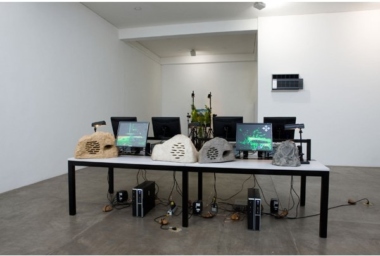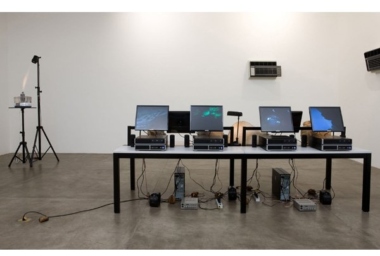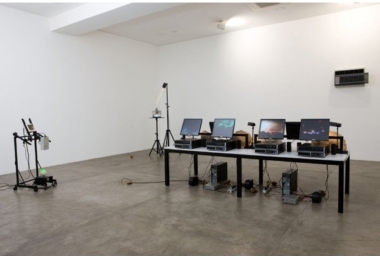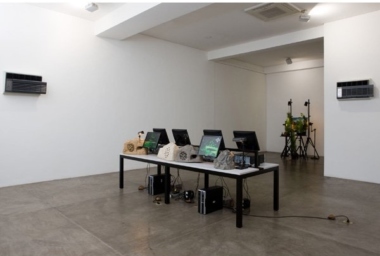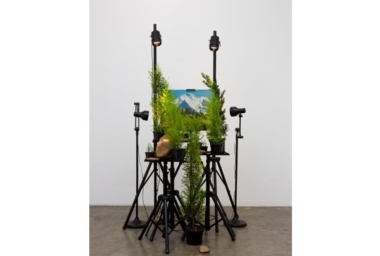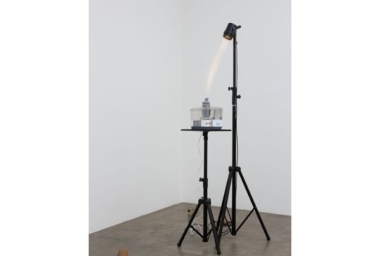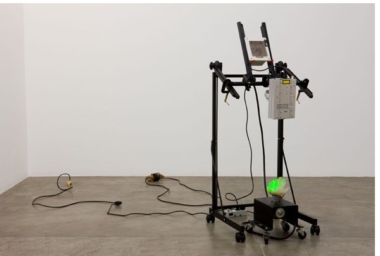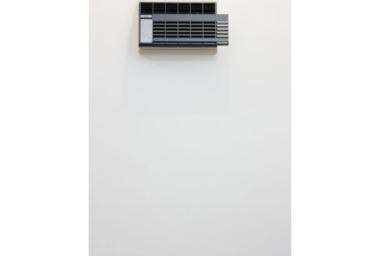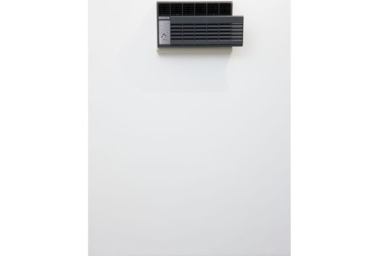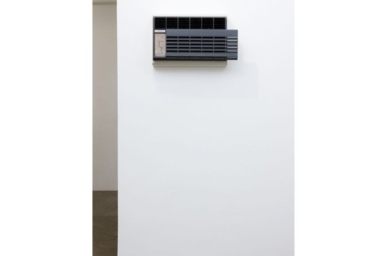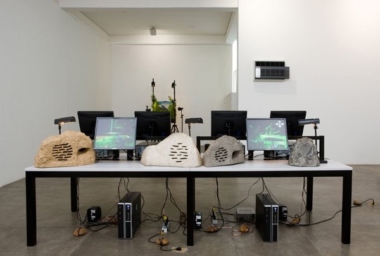In his first solo show at Galeria Fortes Vilaça, Rodrigo Matheus presents five never-before-shown works from his series O Mundo em que Vivemos [The World in Which We Live]. Among installations and objects Matheus explores ways of representing nature by means of mechanical or digital artificiality.
O Mundo em que Vivemos evidences the fact that our perception of the world and of nature takes place, in many cases, by way of simulacra. In the work Untitled (Watercycle), a humidifier blows its fog incessantly under a bright light. Both the humidifier and the light are supported on tripods, their power cords in plain sight; yet, although the structure is revealed in its entirety, the artwork retains an aura of dramaticity and mystery.
In the installation Workstation, Matheus constructs a nonproductive workstation, discussing the idea of “productivity” and “efficiency.” Six computers attached to a metallic structure are arranged facing each other. The monitors repeatedly display images of scenes extracted from video games. Matheus restages the original scenes of the games in the absence of the characters, icons and soundtrack, showing only sequences of landscapes and natural phenomena depicted in a fantastic way. Time in the videos is extended, while the camera lingers to focus on waterfalls, mountains, sunsets, clouds and stars, offering a moment for contemplation amidst a hectic life based on one’s work schedule. Completing the installation, “stonespeakers” placed under the tables emit recordings of various real, natural sounds. The wires, cables and screws appropriated by the artist are incorporated as formal, significant elements in the artwork. In Criptonita [Kryptonite], a raw crystal is placed on a rotating disc, from time to time passing under a laser beam that lends it an artificial brilliance.
As art critic Rodrigo Moura has pointed out, “Matheus does not restrict himself to a specific support, but appears to articulate a range of mediums (painting, sculpture, works on paper, installation, architecture and visual programming) to approximate themes within the arts properly speaking to those of a more ordinary or applied visuality.”
The artist held the institutional exhibitions Centurium, at the Museu de Arte da Pampulha, Belo Horizonte, Brazil, in 2006, and A Volta da Arquitetura [The Rebirth of Architecture], at the Centro Universitário Maria Antônia, São Paulo, in 2005. His work is also shown regularly in international galleries, and he has participated in important group shows at museums such as MAM (Museu de Arte Moderna) and MIS (Museu da Imagem e do Som), both in São Paulo.
